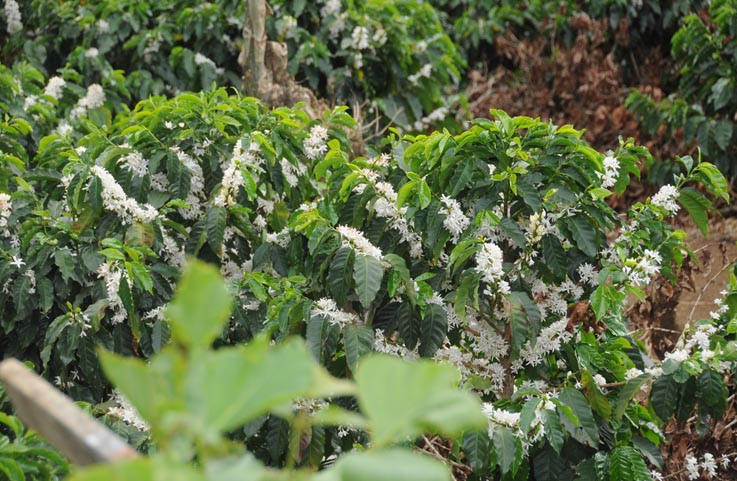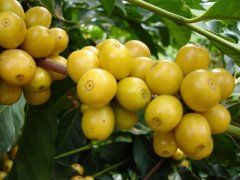Characteristics of Guatemalan coffee beans in different producing areas Coffee bean flavor in each producing area of Guatemala
For professional baristas, please follow the coffee workshop (Wechat official account cafe_style)
The land bridge between Central America and North and South America consists of seven countries, namely Belize, Costa Rica, El Salvador, Guatemala, Honduras, Nicaragua and Panama. Seven Central American countries all produce coffee, of which Guatemala, Costa Rica and Honduras are among the top 10 global coffee exporters.
Coffee began to flourish in Central America in the 18th century, and this important economic product originated in Costa Rica around 1840. Since Central America became independent from Spain in 1821, there has been a lot of war. Costa Rica was far from the Spanish colonial capital Guatemala. On the contrary, Guatemala and El Salvador delayed coffee production because of the civil war. After that, the political dispute gradually subsided, and the Central American countries except Honduras began to produce coffee in the 19th century.
Central America has the natural advantages of sunshine, land, and mountains, and a sufficient working population, which makes the region unique in growing and producing high-quality coffee. In the late 19th century, coffee became an indicator of economic growth in Central American countries and passed the Coffee Promotion Act in an all-round way. With the most remarkable results in countries such as Costa Rica, El Salvador and Guatemala, coupled with the scientific and technological way of growing coffee, Central America has become one of the four largest coffee producing areas in the world.
Guatemala
The coffee beans produced in Guatemala, which has seven major coffee producing areas, are all Arabica, all located in the highlands of the subtropical climate, with rich and stable rainfall and fertile volcanic ash soil. all parts of the country have natural environmental conditions that are very suitable for coffee cultivation. Each producing area has a unique flavor, excellent sour taste and fruity lubrication, is one of the top coffee in the world, suitable for single drink.
Name of producing area
* Antigua Antigua: rich volcanic soil with low moisture, strong sunshine and cool night breeze are the characteristics of Antigua area. Three spectacular active volcanoes-Yagua, Jacques and Fugua form a beautiful valley. Fugua active volcano from time to time adds misty dust / coffee rich and mild, mellow aroma and high-quality acidity
* Koban rainforest Rainforest Coban: there are significant differences in the Koban rainforest region in the coffee producing areas of Guatemala. The area is shrouded in clouds throughout the year, the rainfall is abundant and the climate is cool. The local soil is composed of limestone and clay. Under the influence of the Atlantic basin and the northward jungle tropical climate, most of the coffee in this area is grown on obviously slow hilly land / its characteristics are obviously different from those in other producing areas of the country.
Characteristic full-bodied beans with distinct and subtle acidity, with a hint of wine aroma
* Mount San Marcos Volcanic San Marcos: the warmest coffee producing area in the country. In this area, the rainy season is the densest and the flowering period is the earliest. The rainy season is from June to September, even torrential rain. In some areas, the annual rainfall is as high as 197 inches / the coffee has a distinct sour taste, and the beans are full with a clear, faint aroma of flowers.
* Attilan Traditional Atitlan: one of the four major volcanic coffee zones. The soil of Attilan is the most fertile of all organic matter. 90% of the coffee is planted along extremely steep slopes all the way to Lake Attilan, the largest and most famous of the many volcanic lakes in Guatemala.
The characteristic coffee is fragrant and intoxicating, the taste is sweet in the sour, and the coffee bean is full.
* towering Highland Highland Huehue: the driest and highest area of coffee production among the three non-volcanic areas. It is currently the most rugged and remote place in Guatemala. Due to the hot and dry wind blowing into the mountains from the Mexico Plain, the mountain area is frost-free to grow coffee up to 6500 feet high. The characteristic coffee beans are firm and full, with a special sour taste and a slight wine aroma.
* Farrakhan Nice Plain Fraijanes Plateau: the volcano is quite high above sea level and the soil is rich in pumice. Farrakhan Nice Plain is an active volcanic area, so the coffee producing area has similar characteristics to Antigua. Rain Water's high and varied humidity and temperature difference give the Farrakhan Nice Plain a very different flavor.
Characteristic Farrakhan Nice Plain Coffee has elegant fragrant temperature and mellow overall texture, with special and pleasant acidity.
* New Oriental New Oriente: under the perennial cloud shade of Rain Water Fengpei, New Oriental is similar to Koban in climate, except for a small difference. It used to be a volcanic area with metamorphic rocks in the soil. The minerals in the soil are balanced by a large amount of metamorphic rock. Coffee cultivation is also different from the general volcanic areas of Guatemala, New Oriental coffee grows in volcanic soil, and there is no volcanic activity during the growth period.
Characterized by aroma, obvious acidity and good texture, it is the latest coffee producing area in Guatemala.

Important Notice :
前街咖啡 FrontStreet Coffee has moved to new addredd:
FrontStreet Coffee Address: 315,Donghua East Road,GuangZhou
Tel:020 38364473
- Prev

Parameters of Central American Salvadoran Coffee characteristics of Salvadoran Coffee producing areas
For the exchange of professional baristas, please follow the Coffee Workshop (official Wechat account cafe_style). There are seven countries in Central America, namely, Belize, Costa Rica, El Salvador, Guatemala, Honduras, Nicaragua and Panama. All seven countries in Central America produce coffee, among which Guatemala, Costa Rica and Honduras are global coffee exporters.
- Next

Central American Nicaraguan and Honduran coffee flavor, suitable for how to make it
For the exchange of professional baristas, please follow the Coffee Workshop (official Wechat account cafe_style). There are seven countries in Central America, namely, Belize, Costa Rica, El Salvador, Guatemala, Honduras, Nicaragua and Panama. All seven countries in Central America produce coffee, among which Guatemala, Costa Rica and Honduras are global coffee exporters.
Related
- Detailed explanation of Jadeite planting Land in Panamanian Jadeite Manor introduction to the grading system of Jadeite competitive bidding, Red bid, Green bid and Rose Summer
- Story of Coffee planting in Brenka region of Costa Rica Stonehenge Manor anaerobic heavy honey treatment of flavor mouth
- What's on the barrel of Blue Mountain Coffee beans?
- Can American coffee also pull flowers? How to use hot American style to pull out a good-looking pattern?
- Can you make a cold extract with coffee beans? What is the right proportion for cold-extracted coffee formula?
- Indonesian PWN Gold Mandrine Coffee Origin Features Flavor How to Chong? Mandolin coffee is American.
- A brief introduction to the flavor characteristics of Brazilian yellow bourbon coffee beans
- What is the effect of different water quality on the flavor of cold-extracted coffee? What kind of water is best for brewing coffee?
- Why do you think of Rose Summer whenever you mention Panamanian coffee?
- Introduction to the characteristics of authentic blue mountain coffee bean producing areas? What is the CIB Coffee Authority in Jamaica?

